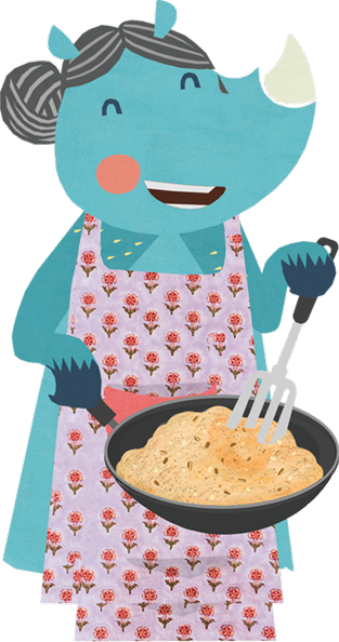
Spoon-led weaning, a popular method among parents, involves feeding purees to your baby using a spoon. This usually starts at 6 months, when babies can sit up and grab things.
However, some high-risk babies may need to start earlier due to allergy risks, and premature or specially challenged babies may need to start before 6 months. Talk to your doctor before starting solids to make sure your baby is ready.
So, how do you know if your baby is ready? Babies show certain signs of development or growth, which indicate they're ready to eat solid foods. One such sign is their ability to chew and swallow. There are some important signs of readiness, which we will cover on Day 5 of this week. We will also explore how you can guide your baby to build these skills, if they are not yet there.
Babies show certain signs that indicate they are ready to start solid foods. These include:
- Strong head and neck control – the baby can hold their head steady while sitting upright; this is important to prevent choking hazards.
- Sitting independently – the baby can sit up on their own, even if only for a few seconds at a time.
- Reaching and grabbing – the baby can reach out for and grab objects which also means they are building hand-eye coordination skills.
- Interest in food – the baby is showing curiosity towards food and is ready to start exploring new tastes/ textures.
Let’s look at the pros and cons of spoon-led weaning.
Pros of Spoon-Led Weaning
Cons of Spoon-Led Weaning

Can Babies Chew? They Have No Teeth!

It's a common misconception that teeth are necessary for chewing, but the truth is that your baby's gums are strong enough to handle soft foods. Even though their milk teeth are just below the surface of their gums, they are perfectly capable of chewing!

So, while you might want to avoid giving them hard foods like raw carrots, steamed ones can be a great way to give your little one a chance to practice their chewing skills. In fact, you might notice that babies typically start with their incisors before moving on to their molars (the teeth used for chewing) around 14 months of age.
Don't worry if your baby doesn't have all their teeth yet; they can still develop their chewing ability and it's vital to start early to help them learn!
Ready to Try Spoon-Led Weaning Here’s a Step-by-Step Guide
1) Seat your baby well

2) Start feeding


3) When to stop feeding

















